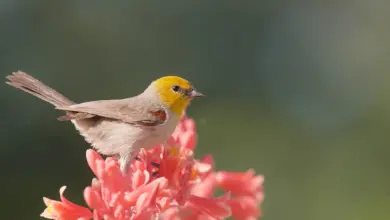Albatrosses
Albatrosses are large web-footed seabirds that range widely in the Southern Ocean and the North Pacific.
In the North Pacific, they were once known as Goonie birds or Gooney birds. In the southern hemisphere, they are often referred to as mollymawk.
Albatrosses are long-lived with a life expectancy of 50 or longer. The oldest recorded was a Northern Royal Albatross that was ringed as an adult and lived for another 51 years. Its age at death was estimated to be 61.
Description
They are amongst the largest of flying birds. The great albatrosses (Diomedea) specifically have the largest wingspans of any extant bird exceeding 340 cm (11 ft) – but the other species’ wingspans are considerably smaller at 1.75 m (5.7 ft). The long, slender wings are stiff and cambered, with thickened streamlined leading edges.
They have large heads with massive hooked bills that are strong and sharp-edged. The beak is composed of several horny plates. Along the sides are the two “tubes” (long nostrils), which allow the albatrosses to have an acute sense of smell.
The feet have no hind toe and the three anterior toes are webbed.
Their bodies are mainly white with some variation of dark upper-wing and back, and white undersides. The Southern Royal Albatross is almost completely white except for the ends and trailing edges of the wings in fully mature males.
Albatrosses are highly efficient flyers – using dynamic soaring and slope soaring to cover great distances and they can remain aloft for several hours.
Species
- Great Albatrosses (Diomedea)
- Wandering Albatross D. exulans
- Antipodean Albatross D. (exulans) antipodensis
- Amsterdam Albatross D. (exulans) amsterdamensis
- Tristan Albatross D. (exulans) dabbenena
- Northern Royal Albatross D. (epomorpha) sanfordi
- Southern Royal Albatross D. epomophora
- North Pacific albatrosses (Phoebastria)
- Waved Albatross P. irrorata
- Short-tailed Albatross P. albatrus
- Black-footed Albatross P. nigripes
- Laysan Albatross P. immutabilis
- Mollymawks (Thalassarche)
- Black-browed Albatross T. melanophris
- Campbell Albatross T. (melanophris) impavida
- Shy Albatross T. cauta
- White-capped Albatross T. steadi
- Chatham Albatross T. (cauta) eremita
- Salvin’s Albatross T. (cauta) salvini
- Grey-headed Albatross T. chrysostoma
- Atlantic Yellow-nosed Albatross T. chlororhynchos
- Indian Yellow-nosed Albatross T. (chlororhynchos) carteri
- Buller’s Albatross T. bulleri
- Sooty albatrosses (Phoebetria)
- Sooty Albatross P. fusca
- Light-mantled Albatross P. palpebrata.
Breeding and Courtship Behavior
Albatrosses usually nest in colonies on isolated islands. Albatrosses reach sexual maturity when they are about five years old, although some species may not start breeding until they are 10.
Their courting behavior involves preening, pointing, calling, bill clacking, and staring. When birds return to their colonies, they may perform a dance with many partners, until one partner is chosen. They then continue to perfect an individual language that will eventually be unique to that one pair. Once they have established a pair bond, they may never dance again. Even though these relationships are typically for life, “divorces” may occur – particularly after several years of breeding failure.
The Albatross female only lays one subelliptical white egg that is covered with reddish-brown spots. The eggs weigh from 200–510 g (7.1–18 oz).
Incubation lasts around 70 to 80 days – which is the longest incubation period of any bird.
The newly hatched chicks are semi-altricial and require brooding and frequent feedings by their parents. They are fed fresh squid, fish, krill, and stomach oil.
Albatross chicks develop slowly. The chicks of larger species fledge 280 days after hatching,, while the chicks of the smaller species fledge when they are 140 and 170 days old.
Status
21 species of albatrosses are recognized by the IUCN – 19 of which are threatened with extinction. Their numbers have declined in the past due to harvesting for feathers. But they are also threatened by introduced species, such as rats and cats that take the eggs and prey on the chicks and nesting adults.
Another big problem is pollution and the decline in fish stocks due to overfishing. Many of them are killed in long-line fisheries – as they are attracted to the bait and get hooked on the lines.
Ingestion of plastic flotsam is another danger that they face. The amount of plastic in the seas has increased dramatically since the first record in the 1960s, coming from waste discarded by ships, offshore dumping, litter on beaches, and waste washed to sea by rivers. Studies have shown that ingestion of plastics results in declining body weight and body condition. This plastic is also regurgitated and fed to chicks. A study of Laysan Albatross chicks showed large amounts of ingested plastic in dead chicks.
Diet / Feeding
They feed on squid, fish, and krill by either scavenging, surface seizing, or diving.


